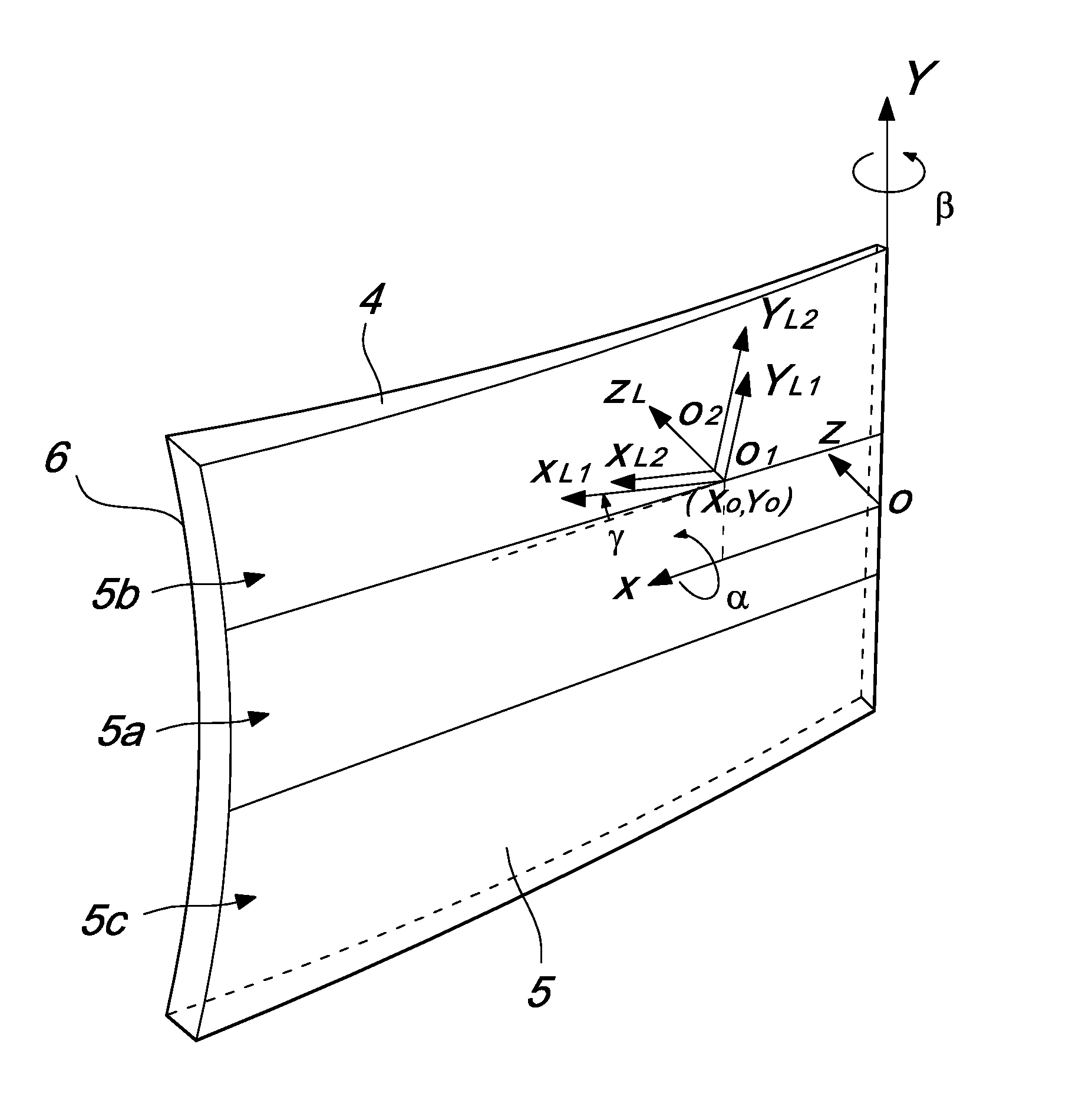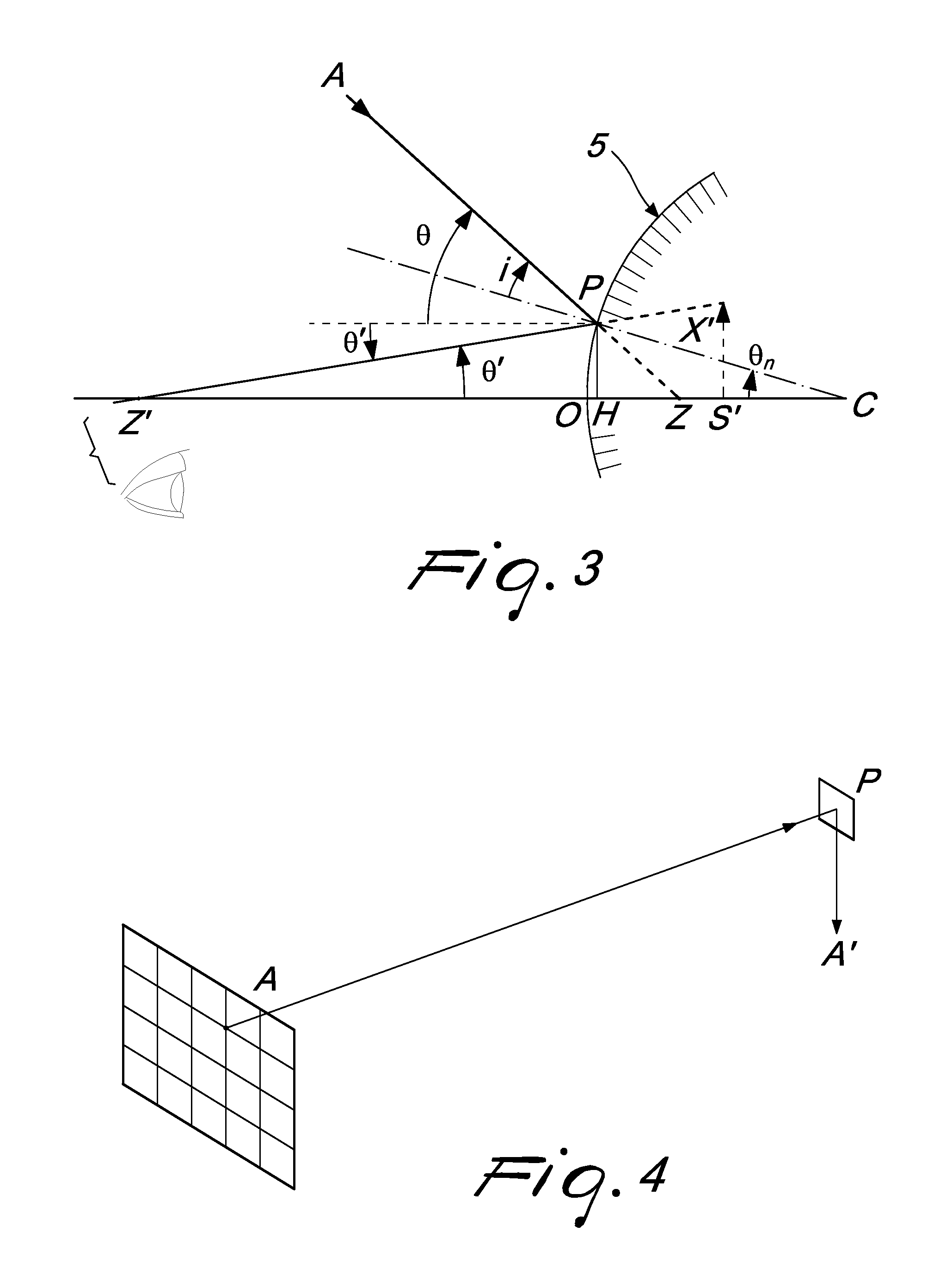Reflecting device with wide vision angle, reduced distortion and anamorphosis and reduced doubling of reflected images, particularly for vehicles
a wide-angle, reflected image technology, applied in the direction of optical viewing, instruments, transportation and packaging, etc., can solve the problems of collision with other vehicles, inability to correct in any way distortion, and wide blind spots
- Summary
- Abstract
- Description
- Claims
- Application Information
AI Technical Summary
Benefits of technology
Problems solved by technology
Method used
Image
Examples
Embodiment Construction
[0044]With reference to the figures, the reflecting device or rear-view mirror, generally designated by the reference numeral 1, comprises a frame 2 and a support 3 by means of which it is possible to install the reflecting device 1 on the car.
[0045]The reflecting device 1, which will be described hereinafter with reference to its main surfaces with an image reflection function, comprises a single monolithic body 4 made of transparent plastic material, such as for example thermoplastic materials with high-level light transmission such as Nylon, PMMA (polymethyl methacrylate) and polycarbonate, as well as thermosetting materials, such as for example CR39 (a polymer developed by the Columbia Chemical Co., located in Columbia, S.C., USA, which belongs to the class of polyesters). All the cited plastic materials ensure advantageous optical and mechanical properties with respect to glass, with the same refractive index and low chromatic dispersion but with a specific gravity equal to app...
PUM
| Property | Measurement | Unit |
|---|---|---|
| refractive index | aaaaa | aaaaa |
| transparent | aaaaa | aaaaa |
| shape coefficients | aaaaa | aaaaa |
Abstract
Description
Claims
Application Information
 Login to View More
Login to View More - R&D
- Intellectual Property
- Life Sciences
- Materials
- Tech Scout
- Unparalleled Data Quality
- Higher Quality Content
- 60% Fewer Hallucinations
Browse by: Latest US Patents, China's latest patents, Technical Efficacy Thesaurus, Application Domain, Technology Topic, Popular Technical Reports.
© 2025 PatSnap. All rights reserved.Legal|Privacy policy|Modern Slavery Act Transparency Statement|Sitemap|About US| Contact US: help@patsnap.com



